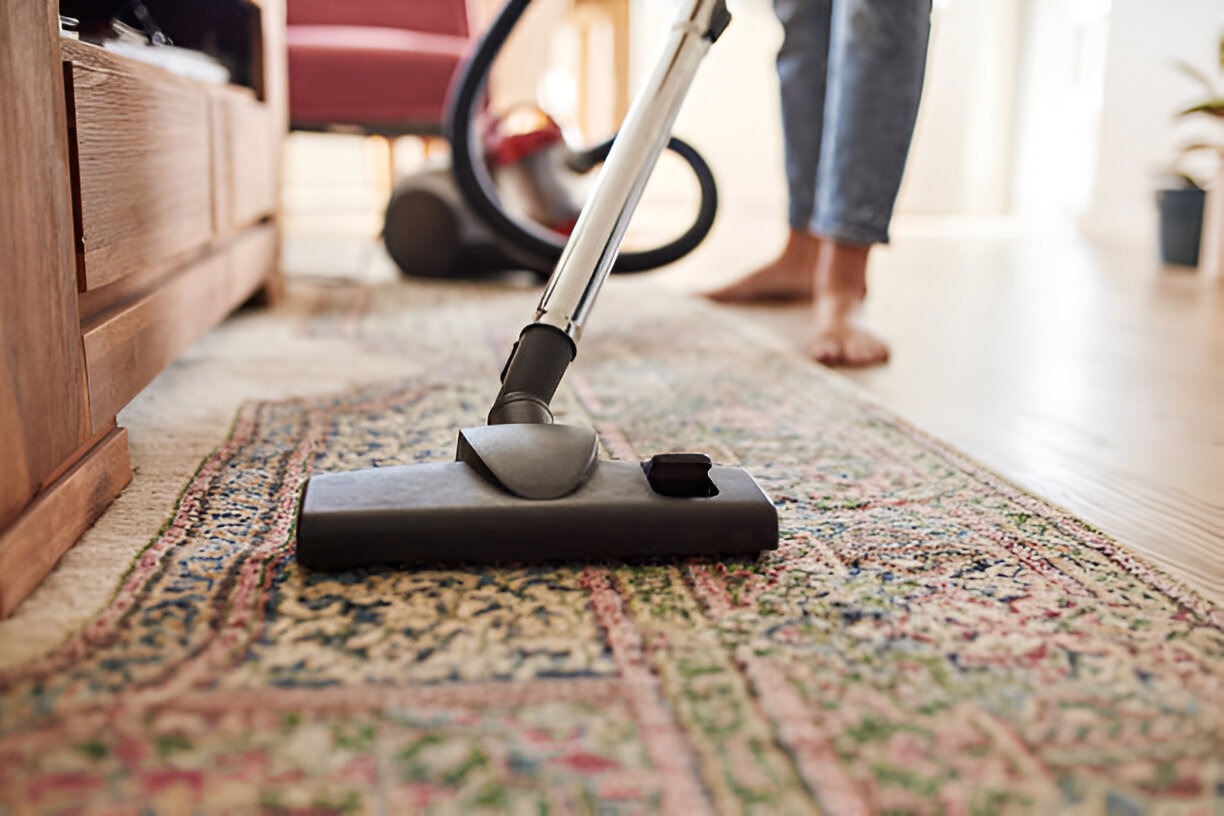Carpets add warmth and comfort to any space, but keeping them clean is essential for a healthy environment. With various carpet cleaning methods available, it can be confusing to choose the best one. In this article, we’ll explore different carpet cleaning techniques to help you decide the most effective way to clean your carpets.
Understanding Different Carpet Cleaning Methods
Before we dive into the best method, it’s crucial to understand the primary carpet cleaning techniques. Each method has its advantages and limitations, so knowing how they work will help you make an informed decision.
What is the Best Carpet Cleaning Process?
1. Hot Water Extraction (Steam Cleaning)
Hot water extraction, commonly known as steam cleaning, is a popular and widely recommended method. This technique involves injecting hot water into the carpet fibres under high pressure. The hot water, mixed with a cleaning solution, loosens dirt and grime. The solution is then extracted using a powerful vacuum, leaving the carpet clean and refreshed.
Steam cleaning is highly effective for deep cleaning. It removes dirt, bacteria, and allergens trapped in the carpet. Additionally, it is gentle on the carpet fibres, making it a preferred choice for many homeowners. However, the drying time can be longer, and the process may be disruptive if done during business hours in commercial settings.
2. Carpet Shampooing
Carpet shampooing is one of the older carpet cleaning methods, primarily used for commercial spaces with heavy foot traffic. In this process, a foamy shampoo is applied to the carpet and worked into the fibres using a rotary machine. The foam captures dirt, which is then vacuumed away after the shampoo dries.
While carpet shampooing can make carpets appear brighter, it may leave a sticky residue behind, attracting more dirt over time. This method is less effective for deep cleaning and may not be suitable for delicate carpets.
3. Dry Carpet Cleaning
Dry carpet cleaning, also known as dry compound cleaning, is a method that uses little to no water. A dry cleaning compound is spread over the carpet and worked into the fibres using a machine with rotating brushes. The compound absorbs dirt and is then vacuumed up, leaving the carpet clean.
This method is ideal for commercial settings where minimal downtime is essential. The carpet can be used almost immediately after cleaning, as it does not require drying time. However, dry carpet cleaning may not be as effective for deep cleaning, and the cleaning compound can sometimes build up in the carpet, leading to potential odours.
4. Encapsulation Cleaning
Encapsulation cleaning is a newer technique often considered an interim maintenance method. A special cleaning solution is applied to the carpet, which forms tiny crystals around the dirt particles. These crystals are then vacuumed away, leaving the carpet looking clean.
Encapsulation is a low-moisture method with fast drying times, making it suitable for busy commercial environments. However, it may not provide the deep clean that steam cleaning offers and is best used between more thorough cleaning sessions.
5. Bonnet Cleaning
Bonnet cleaning is another surface-level cleaning method often used in commercial spaces. A rotating bonnet, soaked in a cleaning solution, is run over the carpet, lifting surface dirt and giving the carpet a fresh appearance. This method is quick and requires little drying time, making it ideal for routine maintenance.
However, bonnet cleaning only cleans the surface of the carpet and may not remove dirt and contaminants embedded deep within the fibres. It’s best used for quick touch-ups rather than deep cleaning.
Which Method is the Best?
The best method to clean carpets depends on your specific needs and circumstances. Here’s a summary to help you decide:
- For Deep Cleaning: If you’re looking for a thorough clean that removes deep-seated dirt, bacteria, and allergens, hot water extraction (steam cleaning) is the best choice. It’s effective, gentle on carpets, and ensures a long-lasting clean.
- For Commercial Spaces: In busy commercial environments where carpets need frequent cleaning with minimal disruption, dry carpet cleaning or encapsulation cleaning are ideal. They offer quick drying times and allow carpets to be used almost immediately.
- For Routine Maintenance: If your carpets are in good condition and just need a regular refresh, bonnet cleaning or encapsulation cleaning can keep them looking clean without the need for a deep clean.
- For High Traffic Areas: For areas with heavy foot traffic, such as hotels or offices, carpet shampooing can help maintain a cleaner appearance, though it may not provide the deep clean that other methods offer.
Contact us today!
Ready to Transform Your Carpets?
Choosing the best carpet cleaning method depends on your carpet’s condition, your environment, and your cleaning needs. For most homes, steam cleaning offers the most comprehensive clean, ensuring your carpets are fresh, sanitary, and long-lasting. However, for commercial spaces or areas with specific requirements, other methods like dry cleaning or bonnet cleaning might be more appropriate.
If you’re looking for a reliable and effective carpet cleaning service, look no further than Dave’s Cleanouts and Collectibles. Our team of professionals uses the best techniques to ensure your carpets look their best and stay clean longer. Don’t wait—contact us today to schedule your carpet cleaning and experience the difference for yourself!
Frequently Asked Questions
1. What is the most effective carpet cleaning method?
Hot water extraction, or steam cleaning, is highly effective for deep cleaning carpets, removing dirt, stains, and allergens while ensuring a thorough clean.
2. How often should carpets be professionally cleaned?
Carpets should be professionally cleaned every 6 to 12 months, depending on traffic and use, to maintain their appearance and extend their lifespan.
3. Is steam cleaning safe for all types of carpets?
Yes, steam cleaning is generally safe for most carpets, including synthetic and wool. However, always check manufacturer guidelines or consult a professional for delicate fibres.
4. Can dry carpet cleaning remove tough stains?
Dry carpet cleaning is effective for regular maintenance and light stains but may not be as powerful as steam cleaning for deep or stubborn stains.
5. How long does it take for carpets to dry after cleaning?
Carpet drying times vary by method. Steam cleaning usually takes 6-12 hours, while dry cleaning can take just 1-2 hours, depending on carpet type and ventilation.
6. What should I do if my carpet has a bad smell after cleaning?
If a bad smell persists, ensure carpets are thoroughly dried and ventilated. If the smell continues, it may be necessary to clean again or consult a professional for further treatment.


